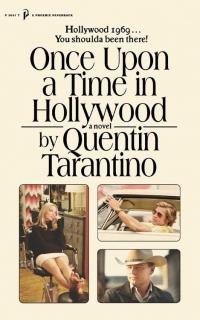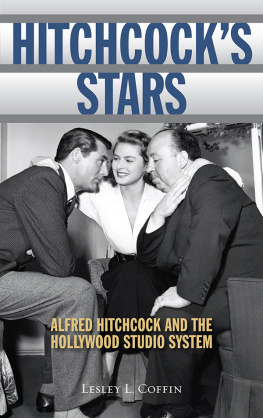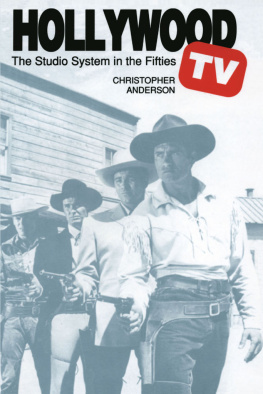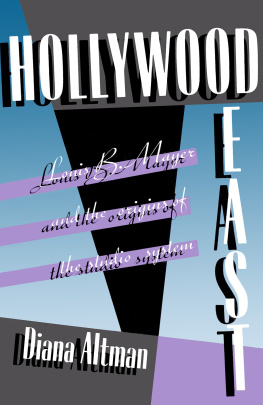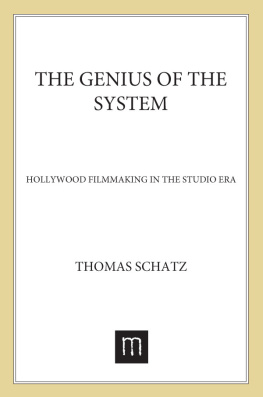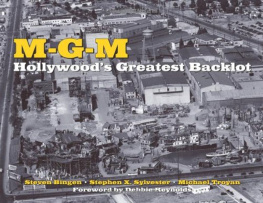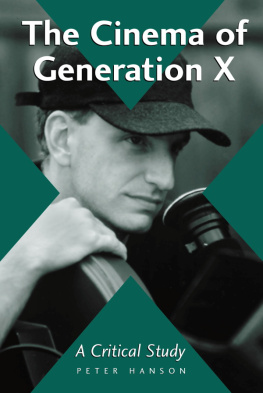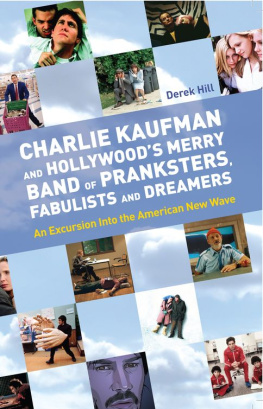REBELS
on the Backlot
S IX M AVERICK D IRECTORS
AND H OW T HEY C ONQUERED THE
H OLLYWOOD S TUDIO S YSTEM
SHARON WAXMAN

To Claude, with Love
and to
Alexandra, Jeremy, and Daniel, My Gems
CONTENTS
1. Quentin Tarantino Discovers Hollywood;
Steven Soderbergh Gets Noticed, 19901992
2. Spanking and Flirting; Chewing
on Pulp Fiction, 19921995
3. Hard Times on Hard Eight; Flirting with the
Indies; Schizopolis, The Experiment, 19941995
4. New Line Hits a Bump in the Road;
Paul Thomas Anderson Starts to Boogie;
Steven Soderbergh Hits Traffic, 1996
6. The Essence of Malkovich;
Making Boogie Nights, 1996
7. Pulling Punches on Fight Club;
Pulling Strings for Malkovich;
Magnolia Blooms, 1997
8. Shooting the Real Malkovich;
Warner Brothers Anoints Three Kings;
Getting Traffic Out of a Jam, 1998
9. Casting Three KingsGeorge Clooney Tries
Harder; The ShootWar Breaks Out, 1998
10. 1999: A Banner Year; Fight Club Agonies,
Fox Passes on Traffic
11. Releasing John Malkovich;
Testing Three Kings; Trimming Magnolia, 1999
13. Casting Harrison Ford; Movie Stars Rule;
Making Traffic the Schizopolis Way, 2000
On October 4, 2001, a Thursday, a banner headline in Variety caught my attention. Helmers the Reel Deal, it read, bold type marching across the top of the tabloid-sized trade paper. The sub-headline followed: Young directors will run own shingle at USA Films. The story announced that a group of Hollywoods most talented, most exciting young directorsSteven Soderbergh, Spike Jonze, David Fincher, Alexander Payne, and Sam Mendesyoung artists who, between them, had created some of the most original and important movies of the previous few years, were banding together to create a major film venture. The article said: They will direct films and enjoy complete creative control, along with the opportunity to own the titles in five to seven years. It added: In the new venture, each partner has pledged to direct three movies over the first five years, and the venture will exist only for the production and distribution of their films. The article evoked memories of the halcyon years of the late 1960s and 1970s, when then-powerhouse helmers Francis Coppola, Peter Bogdanovich and William Friedkin created a directors studio within Paramount Pictures.
T HE REFERENCE TO THE GREAT DIRECTORS OF EARLIER DECADES was not a coincidence. The young generation that emerged in the 1990sand these young men were chief among themwere nothing if not self-conscious heirs to the mantle of directors such as Coppola, Bogdanovich, and Friedkin, along with Martin Scorsese, Steven Spielberg, Hal Ashby, Robert Altman, George Lucas, and a long list of others. In the 1970s, these older visionaries created the movies that defined their era with groundbreaking, challenging, and ultimately enduring films including The French Connection, Nashville, Raging Bull, Apocalypse Now, and Midnight Cowboy. By now, most of those talents had retired, burned out, or become hacks in the Hollywood studio system. Some of them, like Scorsese, still struggled to make movies that rose to the level of their youthful artistry, with mixed results. Only one, Spielberg, still seemed to succeed at his craft with any degree of regularity.
Their time was past. Moviemaking is a young mans game, as more than one of them had told fawning interviewers over the years. Now a new generation of visionary talents had emerged, marking the movies of their time with their own distinctive stamp. By 2001 a true community of young film artists had emerged from the final decade of the twentieth century. Many were friends, others were rivals, and some were enemies. Embracing the spirit of the filmmakers of the 1970s, the new generation avoided their excesses and instead focused their energies on their work. As a group, their sensibility was utterly new, and they shared a collective disdain for a studio system designed to strip them of their voices and dull their jagged edges.
W ITH THEIR FILMS, THE REBELS OF THE 1990S SHATTERED the status quo, set new boundaries in the art of moviemaking, and managed to bend the risk-averse studio structure to their will. They created a new cinematic language, recast audience expectations, and surprised usand one another. They included not only the five from the Variety story and their films, from Traffic to Election to American Beauty, but also David O. Russell, who wrote and directed such comic gems as Flirting with Disaster and the satiric drama Three Kings; Wes Anderson, who had made Rushmore and The Royal Tenenbaums; Sofia Coppola, who conjured up The Virgin Suicides like a tone poem; and Darren Aronofsky, who had made Pi and the piercing Requiem for a Dream. They included Kimberly Peirce, who had made Boys Dont Cry, which won an Oscar for Hilary Swank, and Paul Thomas Anderson, who had made two sweeping masterpieces before the age of thirty, Boogie Nights and Magnolia. Baz Luhrmann revived the musical with his delirious genius in Moulin Rouge, Atom Egoyan wrought delicate emotion in The Sweet Hereafter, and Cameron Crowe penned the path into postmodern romance with Say Anything, and Singles, and Jerry Maguire. They included the sci-fi surrealism of taciturn brothers Larry and Andy Wachowski with the blockbuster The Matrix, and the painterly lyricism of taciturn twins Mark and Michael Polish in the miniscule Twin Falls Idaho.
Quite possibly none of these directors who bucked the Hollywood system of cookie-cutter scripts and cheap MTV imagery could have succeeded without Quentin Tarantino, the rabble-rousing writer-director of Reservoir Dogs and Pulp Fiction, who very early in the decade broke every rule in moviedom to the roaring acclaim of critics, audiences, and (finally) the Hollywood establishment, then brought his irony-tinged violence and retro-cool ethos into mainstream culture.
The movies of the new rebel auteurs shared many things. They played with structure, wreaked havoc with traditional narrative form, fiddled with the film stock, and ushered in the whiplash editing style true to a generation of video game children. Their movies were often shockingly violent and combined their brutality with humor. Paul Andersons scene in Boogie Nights when William H. Macy shoots his wife as she publicly fornicates with a member of the porn film industry vibrated on the same cultural wavelength as Tarantinos deadpan discussion of the state of European fast food by his assassin-philosophers in Pulp Fiction. David O. Russells Iraqi torturer in Three Kings, who asks his torture victim about Michael Jackson before applying electric prods, was cosmically related to the very pregnant Catherine Zeta-Jones snarling to a hit man, Shoot him in the headreferring to a witness against her narcolord husbandin Soderberghs Traffic.
Their stories engaged the viewer in the possibility of parallel realities, whether in the mind of a movie star like John Malkovich, or the subjugation of the human species in The Matrix. David O. Russell questioned the place of the American superpower in the world with uncanny prescience. Paul Anderson, Sofia Coppola, and Sam Mendes went inside daily human experience to explore the small tragedies and the cracks of humanity in daily, suburban American life.
Next page

